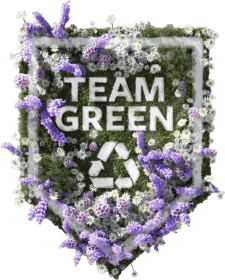Compostable Packaging – A Solution to Plastic Waste?
Introduction
There has been a significant public reaction to plastic marine litter including calls for plastic packaging to be reduced or even banned. Some organisations are looking to bioplastics and particularly compostable packaging as the solution.
Is compostable packaging the solution or should we be looking elsewhere to find the best packaging solutions?
Terminology
Biopolymers (sometimes called bioplastics) are polymers derived from biomass (plant based). They may be natural polymers (e.g. cellulose) or synthetic polymers made from plant-based materials (e.g. Polylactic Acid). They may also be synthetic polymers which are made from synthetic materials that have been derived from biomass (e.g. Polyethylene derived from bioethanol).
Biodegradable: Biodegradation is the process whereby the polymer is broken down into simpler compounds that are found in nature such as CO2, water or biomass. The term ‘biodegradable’ does not imply any particular time scale or process. Polylactic Acid (PLA) is biodegradable. Polyethylene (PE) derived from bioethanol is from a renewable source but it is not biodegradable.
Oxo degradable Oxo degradable plastics are conventional fossil fuel derived plastic materials that are produced with additives that help to speed up degradation of the material into small fragments by UV radiation or heat exposure. Some evidence links oxo degradable plastics to microplastics in the environment. These materials are currently under review by the EU.
Compostable means that biodegradable polymers will biodegrade and disintegrate under standard test conditions of high heat and moisture. A material in the form of a thin film might be compostable, but the same material in a thicker form may not. Compostability is not an inherent property of a material; it relates to the material when it is in a particular form.
Compliance can be demonstrated by CEN Standard 13432:2004.
This standard relates to industrial composting conditions only (2).
What is Compostable Packaging Made From?
Compostable packaging is made from a number of renewable plant-based materials such as corn starch (Polylactic Acid), bagasse, wood pulp and palm leaf. It is important to note that a lot of the sources of compostable packaging are derived from food crops.
Where should I dispose of Compostable Packaging?
Compostable packaging should be placed in the compost bin. The following questions are important to consider before choosing compostable packaging: –
Will the customer know what to do with it? Does the pack label make it clear on how to dispose of it? Is there a risk it could end up in a recycling bin? Compostable materials are not designed to be recycled and therefore risk contaminating conventional packaging recycling streams, particularly plastic.
Is Compostable Packaging right for my Product?
If you’re product is currently dependent on the barrier properties of conventional plastics to maintain shelf life, then it is important to understand the risks associated with a switch to compostable packaging. For example, if you need to now refrigerate it as a result or if shelf life simply cannot be maintained, then these changes could cancel out any environmental benefits.
Is Compostable Packaging better for the Environment?
Theoretically any material that breaks down quickly and completely in nature has a benefit over one that doesn’t. However we need to consider the following:
What additional land is used and could food crops be diverted from food use.
What CO2 is emitted during harvesting of plants, transport and conversion to packaging materials.
What CO2 and methane are emitted if they end up in a landfill.
Caution is therefore needed before you decide that compostable packaging is a better solution than improving prevention, reduction and recycling rates for current materials.


